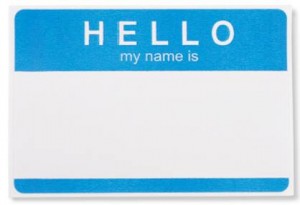Marketing Guides
Creative & Brand Development
When to Change Your Brand Name
 “The sweetest word in the brand universe is your brand’s name.” This obvious quote is from Bill Schley & Carl Nichols, Jr. in their unheralded book “Why Johnny Can’t Brand.”
“The sweetest word in the brand universe is your brand’s name.” This obvious quote is from Bill Schley & Carl Nichols, Jr. in their unheralded book “Why Johnny Can’t Brand.”
Your name is the first and most powerful part of your brand. Choosing a great brand name can help you stand out in a crowded market. It can position you as a leader, convey your culture, even explain what you do in a word or two.
Conversely, a weak name can neutralize or even negate the work you do to build a brand and market position. A weak name is easily forgotten and can limit your opportunities in other markets if you plan to expand.
Consumer product companies understand this, and tie their brand names directly to their brand strategies. Most B2B companies take a more haphazard approach. Those that don’t put any effort into branding simply choose a name, charge forward and end up being “branded” by the market. Or worse yet, they’re simply ignored.
It’s a big undertaking to change your brand name. When is it worth it? Consider changing your name if you’re redefining or repositioning your brand. Here are three reasons to do it:
- Change to distance yourself from a negative event.
- Clarify a confusing or non-descript brand.
- Better represent an upgraded product/service that’s outgrown the existing brand.
For Deciding When to Change Your Brand Name
Quantify the Costs
Did I mention that changing a brand name is a big undertaking? As with any business decision, it’s important to weigh the costs and benefits for a brand naming project. Break down the costs into hard materials and the time and effort to replace them. These can run anywhere from tens of thousands to millions of dollars, depending on your company size.
Corporate Identity/Product Packaging Items
- Letterhead
- Business cards
- All printed materials
- All promotional items, signage and banners
Sales Literature and Tools
- Website
- Company brochure
- Product / service data sheets
- All presentation materials
- Product demos
- Folders
- Templates
Interactive Tools
- Email newsletter
- Electronic branding on other websites
- Company blog
Evaluate the Benefits
It’s straightforward (though not easy) to estimate the cost to change your brand name. The benefits aren’t so easy to quantify. Many of them are intangible and subjective. While this is pretty easy for a branding expert to pinpoint, most SMBs don’t have branding experts facilitating this decision-making process and are left fending for themselves.
Start by considering the following:
- How many years have you been using the existing name?
- Would a change alienate or confuse any existing customers?
- How much goodwill is built into your existing name?
- If you were to change your name, would you lose any revenue as a result? Estimate the dollar loss (if any) over a period of one year.
Now review your brand strategy. Is your name in sync with your brand? Does it reflect your brand promise? Carefully evaluate your position in the marketplace and your last 3-5 years of sales revenue. How well does the market respond to your existing brand? Are your revenues growing at the same rate as your competitors? Do your marketing programs produce large quantities of new leads? Or is it a battle just to keep your existing customers?
If you’ve significantly changed your product or are trying to distance yourself from a negative brand, this decision is easy. The tough decision comes when you’re attempting to jump-start a weak brand. Many times, a weak name and indistinguishable brand cause the above problems. A fresh name and well thought-out brand strategy might open new avenues for growth that far outweigh even substantial rebranding costs.
If you doubt it, check out how many celebrities have changed their names to become more marketable:
- Vincent Damon Furnier to Alice Cooper
- Eleanora Fagan to Billie Holiday
- Demetria Gene Guynes to Demi Moore
- Ilynea Lydia Mironoff to Helen Mirren
- Eilleen Regina Edwards to Shania Twain
- Marion Michael Morrison to John Wayne
For more detailed guidance, check out our comprehensive brand strategy toolkit.